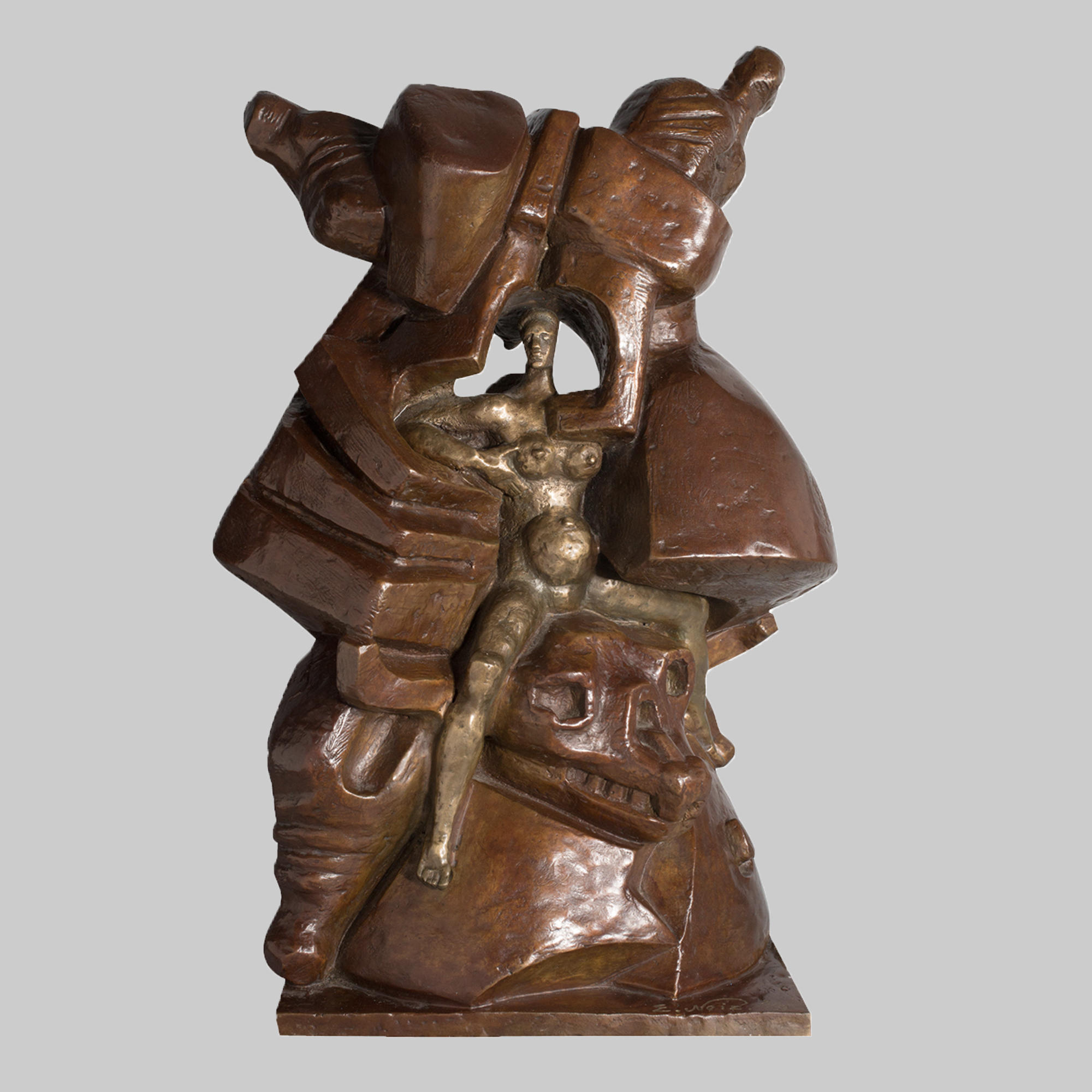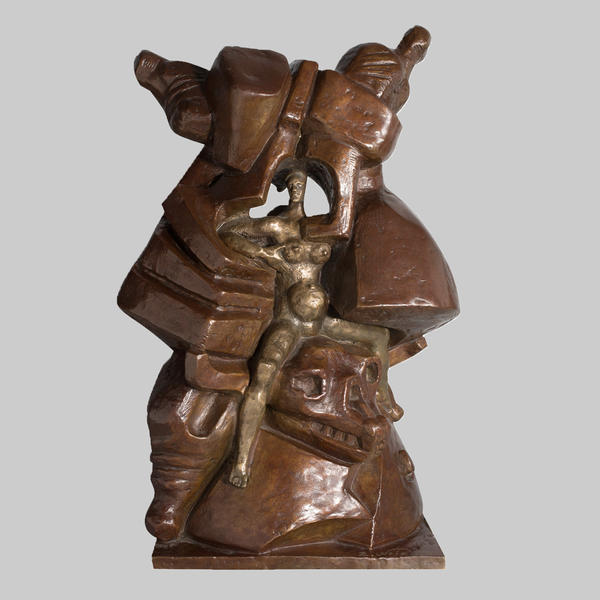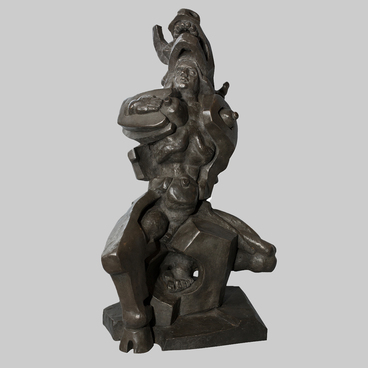The old legend says that the King of the Gods Zeus turned into a bull, put the beautiful Phoenician princess Europa on his back and sailed with her across the sea to Greece. Famous paintings and beautiful stone sculptures are created based on this plot. At the end of the last century, Ernst Neizvestny worked on a series of illustrations for the biblical Book of Job and was deeply immersed in ancient legends. In parallel with the drawings, sculptures united by the theme Power of the Beast saw the light of day. Not all of them directly embody mythological subjects, but creatively rethink them, revealing the deeper layers.
In one composition, Neizvestny managed to embody several diverse plots. At the bottom a monstrous bovine skull grinds its teeth and goggles empty eye sockets. A naked girl with obvious signs of pregnancy sits on the powerful neck of a bull. Indeed, on the back of the statue there is a sculptured open maternal womb with a baby in the pose of the crucified Christ.
The son of Zeus and Europa was named Minos, he grew up and became the great king of the island of Crete. And again, a bull intervenes in the story, but a different one. Queen Pasiphae cheated with him on her husband and gave birth to a monster - the bloodthirsty Minotaur. What skull with sharp horns lies under the children’s legs? Who does he belong to? The unborn Minotaur, half-beast, half-man?
The symbolism in the art of Ernst Neizvestny is incredibly complex. It goes back to the ancient already forgotten cults that rule humanity long before the events of Greek myths and biblical stories. His inherent archaic manner of execution is unmistakably recognized even at a distance. The master says so about his work: “I am exuded from Perm sculpture, from Scythian women, from stone carving.” His works are like a modern paraphrase of the melody of an incredibly ancient anthem, that glorifies the power of love, which overcomes any obstacle and even death itself.
A deep rethinking of half-forgotten legends led the sculptor to a new understanding of the meanings embedded in them. An innocent baby, combining the past and the future with his body, is clearly a Christian symbol, invading the legend that came to us almost from the Stone Age.
In one composition, Neizvestny managed to embody several diverse plots. At the bottom a monstrous bovine skull grinds its teeth and goggles empty eye sockets. A naked girl with obvious signs of pregnancy sits on the powerful neck of a bull. Indeed, on the back of the statue there is a sculptured open maternal womb with a baby in the pose of the crucified Christ.
The son of Zeus and Europa was named Minos, he grew up and became the great king of the island of Crete. And again, a bull intervenes in the story, but a different one. Queen Pasiphae cheated with him on her husband and gave birth to a monster - the bloodthirsty Minotaur. What skull with sharp horns lies under the children’s legs? Who does he belong to? The unborn Minotaur, half-beast, half-man?
The symbolism in the art of Ernst Neizvestny is incredibly complex. It goes back to the ancient already forgotten cults that rule humanity long before the events of Greek myths and biblical stories. His inherent archaic manner of execution is unmistakably recognized even at a distance. The master says so about his work: “I am exuded from Perm sculpture, from Scythian women, from stone carving.” His works are like a modern paraphrase of the melody of an incredibly ancient anthem, that glorifies the power of love, which overcomes any obstacle and even death itself.
A deep rethinking of half-forgotten legends led the sculptor to a new understanding of the meanings embedded in them. An innocent baby, combining the past and the future with his body, is clearly a Christian symbol, invading the legend that came to us almost from the Stone Age.





